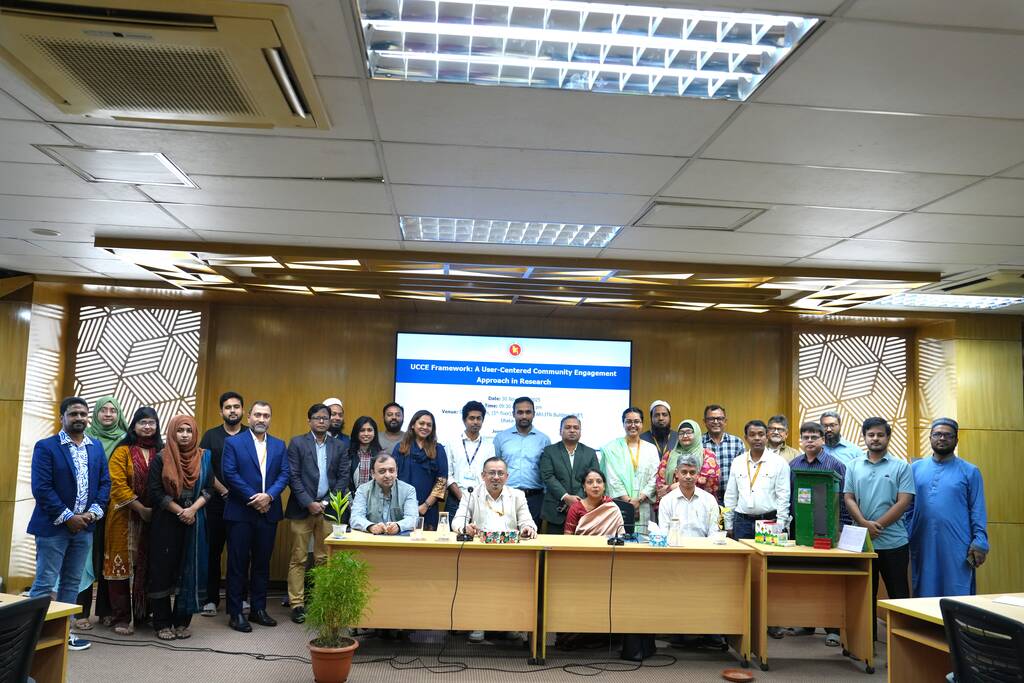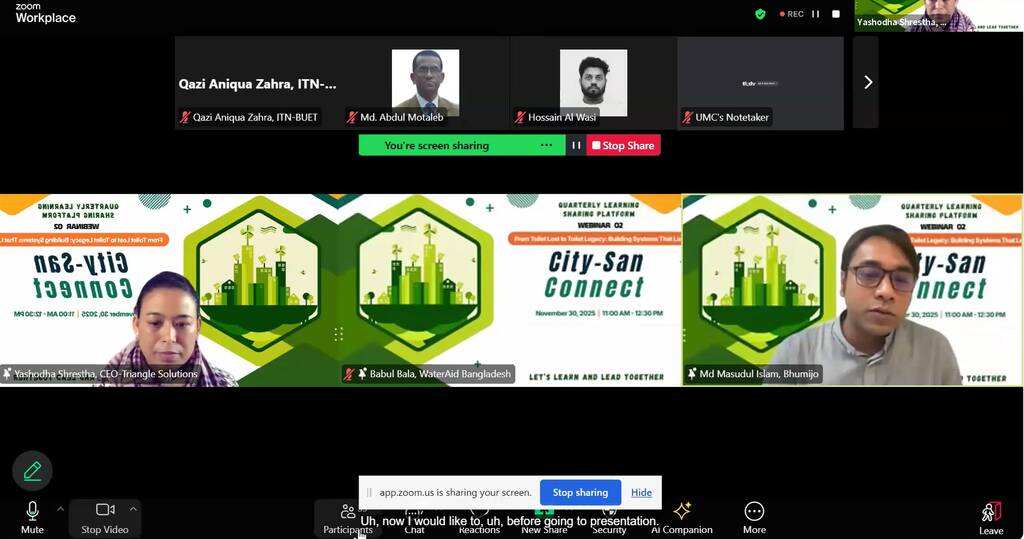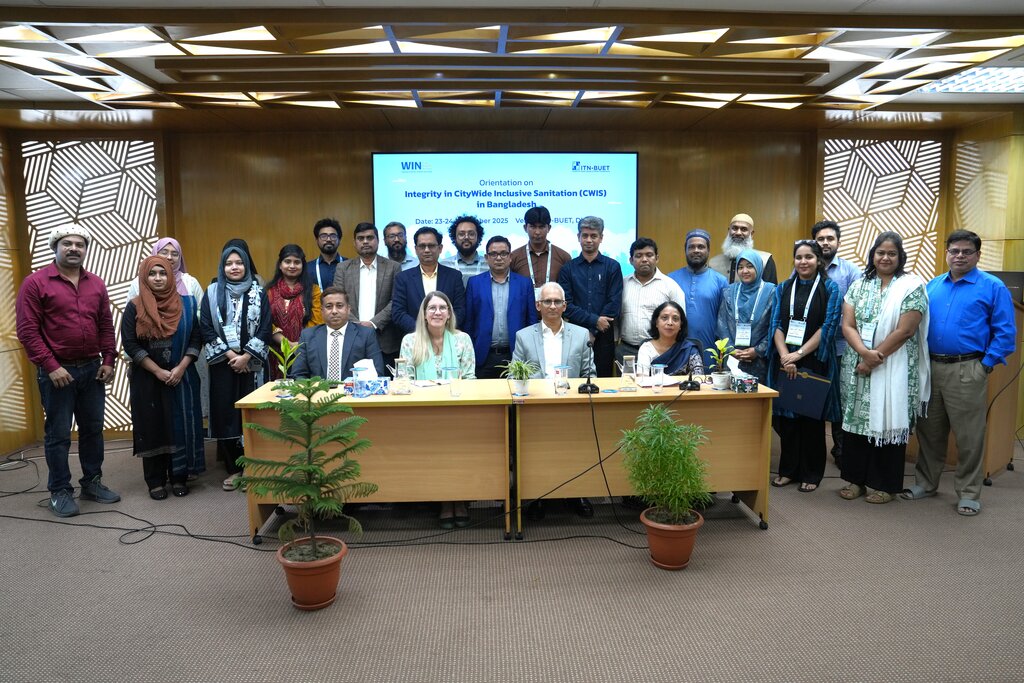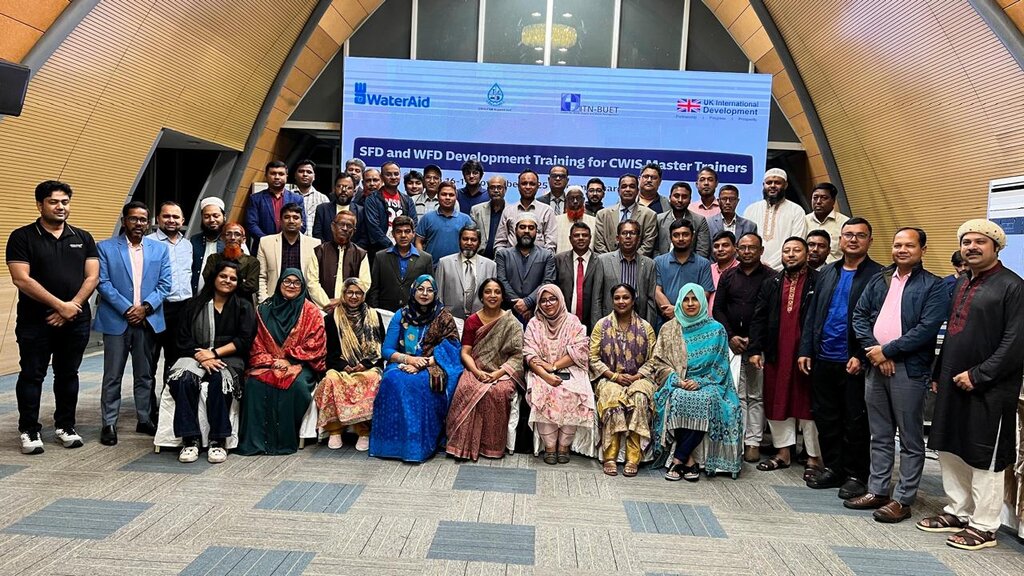The treatment of sludge produced from household septic tanks is an existing issue that poses challenges in terms of both environmental sustainability and public health. As a byproduct of wastewater treatment, sludge contains a mixture of organic and inorganic substances, including pathogens, nutrients, heavy metals, and other contaminants. Addressing this issue requires the development and implementation of effective treatment technologies to ensure the safe and sustainable management of septic tank sludge. The use of constructed wetlands for sludge treatment has become an attractive choice due to their ability to offer a convenient, cost-effective, and eco-friendly solution. However, despite their potential, studies exploring the factors and mechanisms influencing the composition of sludge within constructed wetlands are limited.

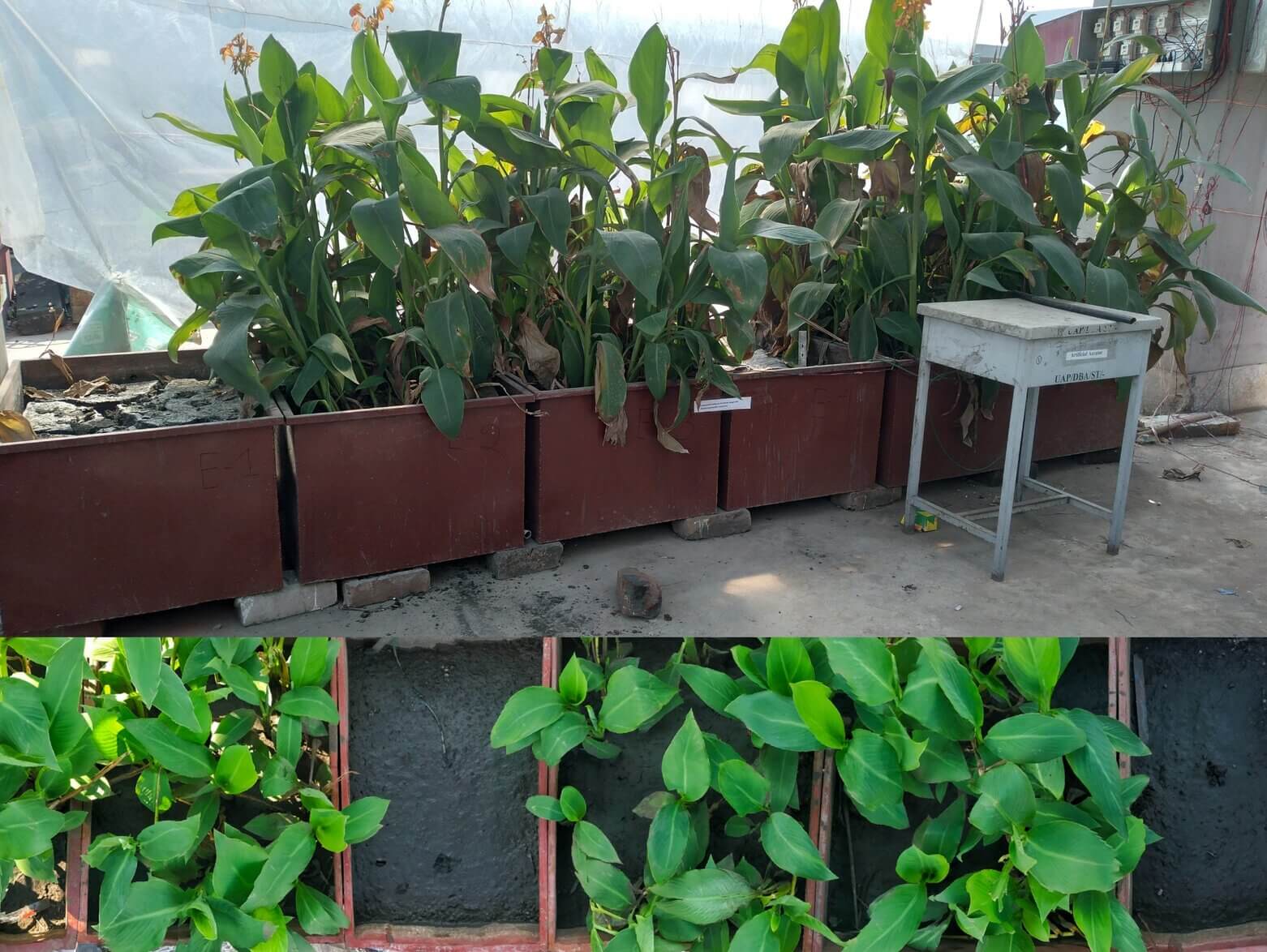
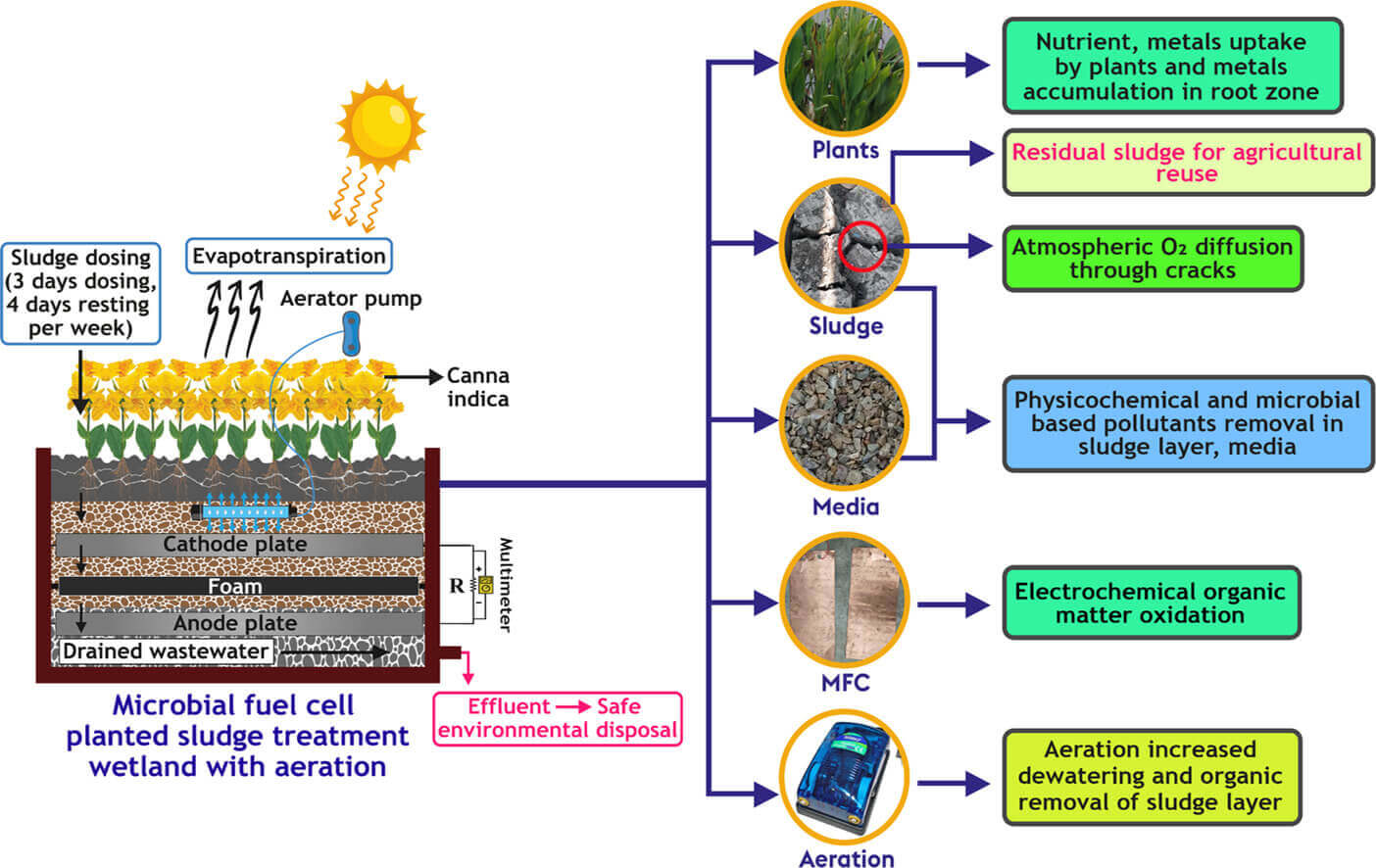
A research project supported by ITN-BUET demonstrated the performance of electrode-assisted wetlands, known as microbial fuel cell constructed wetlands, under various conditions. A comparative study was conducted to evaluate the impact of aeration, plants, electrodes, and pollutant loads on these systems.
In terms of adhering to agricultural reuse and environmental disposal guidelines, aerated microbial fuel cell constructed wetlands proved to be a superior option compared to non-aerated and aerated alternatives for sludge treatment.
The Principal Investigator for this research was led by Dr. Tanveer Ferdous Saeed, a Professor in the Department of Civil Engineering at the University of Asia Pacific, who also served as the lead author of the paper. The co-authors of the study comprised researchers from the University of Asia Pacific, the Department of Public Health and Engineering, Rey Juan Carlos University (Spain), and ITN-BUET.
Dr. Tanveer Ferdous Saeed said “Through this research, we have demonstrated the conversion of human waste into agricultural fertilizer and the simultaneous production of energy using a natural treatment system. Additionally, it is important to highlight that we evaluated the system’s effectiveness in removing heavy metals, a rare phenomenon globally.
“This integrated approach could be implemented by the government or local municipality/city corporation to promote the broader utilization of the resulting end products for agricultural purposes. This could potentially generate revenue to cover the operational and maintenance costs of the septage treatment wetlands” said Prof. Dr. Tanvir Ahmed, Director of ITN-BUET.
This study was funded by a Grant from the Bill and Melinda Gates Foundation and administered by ITN-BUET. The research was published in the 892nd volume of the Science of the Total Environment in 2023.
Here is the link to the article: https://www.sciencedirect.com/science/article/abs/pii/S0048969723031790


